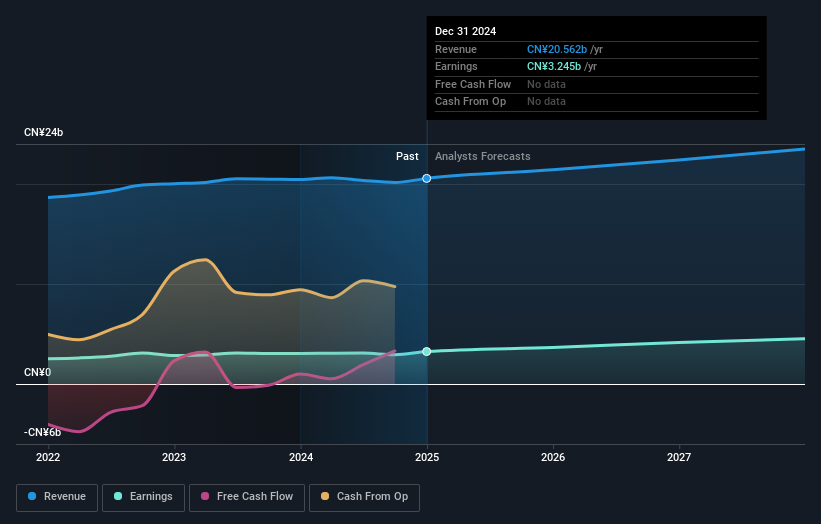
Shareholders of Beijing Jingneng Clean Energy Co., Limited (HKG:579) will be pleased this week, given that the stock price is up 11% to HK$2.16 following its latest yearly results. The result was positive overall - although revenues of CN¥21b were in line with what the analyst predicted, Beijing Jingneng Clean Energy surprised by delivering a statutory profit of CN¥0.39 per share, modestly greater than expected. Following the result, the analyst has updated their earnings model, and it would be good to know whether they think there's been a strong change in the company's prospects, or if it's business as usual. We thought readers would find it interesting to see the analyst latest (statutory) post-earnings forecasts for next year.

Taking into account the latest results, the most recent consensus for Beijing Jingneng Clean Energy from single analyst is for revenues of CN¥21.4b in 2025. If met, it would imply a satisfactory 4.2% increase on its revenue over the past 12 months. Per-share earnings are expected to swell 12% to CN¥0.44. Yet prior to the latest earnings, the analyst had been anticipated revenues of CN¥22.0b and earnings per share (EPS) of CN¥0.61 in 2025. The analyst seem less optimistic after the recent results, reducing their revenue forecasts and making a pretty serious reduction to earnings per share numbers.
View our latest analysis for Beijing Jingneng Clean Energy
What's most unexpected is that the consensus price target rose 12% to HK$2.43, strongly implying the downgrade to forecasts is not expected to be more than a temporary blip.
Taking a look at the bigger picture now, one of the ways we can understand these forecasts is to see how they compare to both past performance and industry growth estimates. We would highlight that Beijing Jingneng Clean Energy's revenue growth is expected to slow, with the forecast 4.2% annualised growth rate until the end of 2025 being well below the historical 5.2% p.a. growth over the last five years. Juxtapose this against the other companies in the industry with analyst coverage, which are forecast to grow their revenues (in aggregate) 4.3% annually. Factoring in the forecast slowdown in growth, it looks like Beijing Jingneng Clean Energy is forecast to grow at about the same rate as the wider industry.
The Bottom Line
The biggest concern is that the analyst reduced their earnings per share estimates, suggesting business headwinds could lay ahead for Beijing Jingneng Clean Energy. Sadly, they also downgraded their revenue forecasts, but the business is still expected to grow at roughly the same rate as the industry itself. We note an upgrade to the price target, suggesting that the analyst believes the intrinsic value of the business is likely to improve over time.
With that said, the long-term trajectory of the company's earnings is a lot more important than next year. At least one analyst has provided forecasts out to 2027, which can be seen for free on our platform here.
That said, it's still necessary to consider the ever-present spectre of investment risk. We've identified 1 warning sign with Beijing Jingneng Clean Energy , and understanding it should be part of your investment process.
Have feedback on this article? Concerned about the content? Get in touch with us directly. Alternatively, email editorial-team (at) simplywallst.com.
This article by Simply Wall St is general in nature. We provide commentary based on historical data and analyst forecasts only using an unbiased methodology and our articles are not intended to be financial advice. It does not constitute a recommendation to buy or sell any stock, and does not take account of your objectives, or your financial situation. We aim to bring you long-term focused analysis driven by fundamental data. Note that our analysis may not factor in the latest price-sensitive company announcements or qualitative material. Simply Wall St has no position in any stocks mentioned.